![]() Theoretical Panels
Theoretical Panels ![]() Public Art
Public Art ![]() Material
Material ![]() Sustainability
Sustainability ![]() Presentation
Presentation
Program ICCCIA 2022 – overviews days – is out!
Download: Overviews days ––– Download: (Programm Flyer PDF)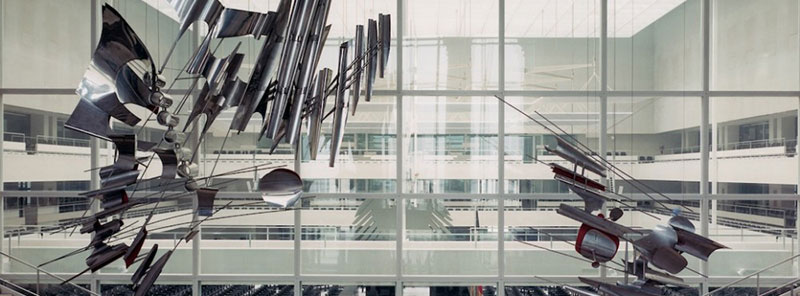
© Photo: "Kosmos", https://bernhard-heiliger-stiftung.de/de/kosmos-bundestag/
![]() Panels @ 9th ICCCIA (Berlin) All penels take place on the campus of HTW-Berlin – https://events.htw-berlin.de | https://www.htw-berlin.de/campus/campus-wilhelminenhof/
Panels @ 9th ICCCIA (Berlin) All penels take place on the campus of HTW-Berlin – https://events.htw-berlin.de | https://www.htw-berlin.de/campus/campus-wilhelminenhof/
More information: www.iron-2022-germany.de and the
Timetable ICCCIA 2022 is online
Link to timetable Panels
Monday: 19.9.22 09 am – 04:30 pm
Tuesday: 20.9.22 09 am – 02:30 pm
Time of specific panels may change
Monday, September the 19th
| 09:00 – 09:30 am |
Opening and Welcome by Dean Susanne Kähler and Vice-President Stefanie Molthagen-Schnöring |
| Keynote Speech by Kurt Dryhaug
|
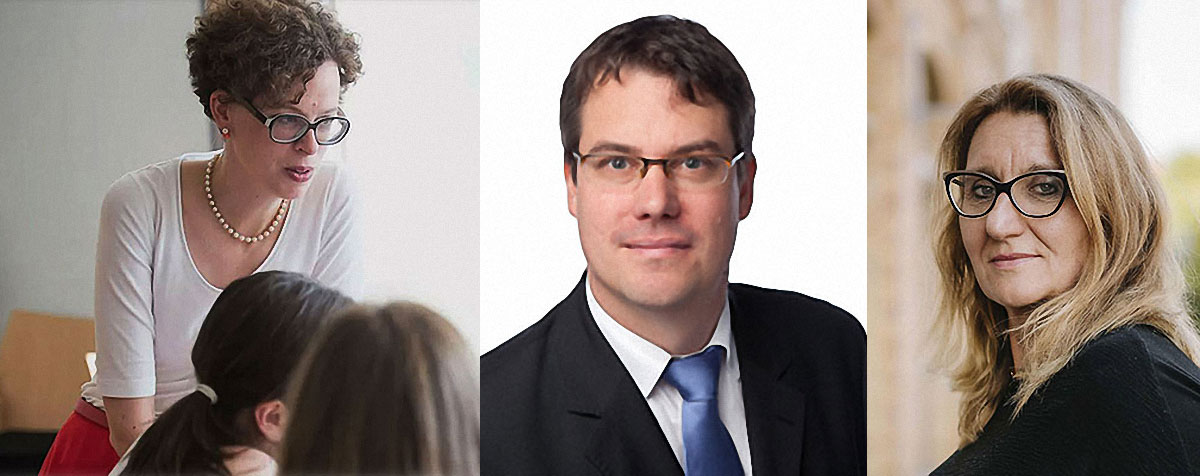
Prof. Dr. Stefanie Molthagen-Schnöring, Prof. Dr. Steffen Kolb und Prof. Dr. Susanne Kähler
Kurt Dyrhaug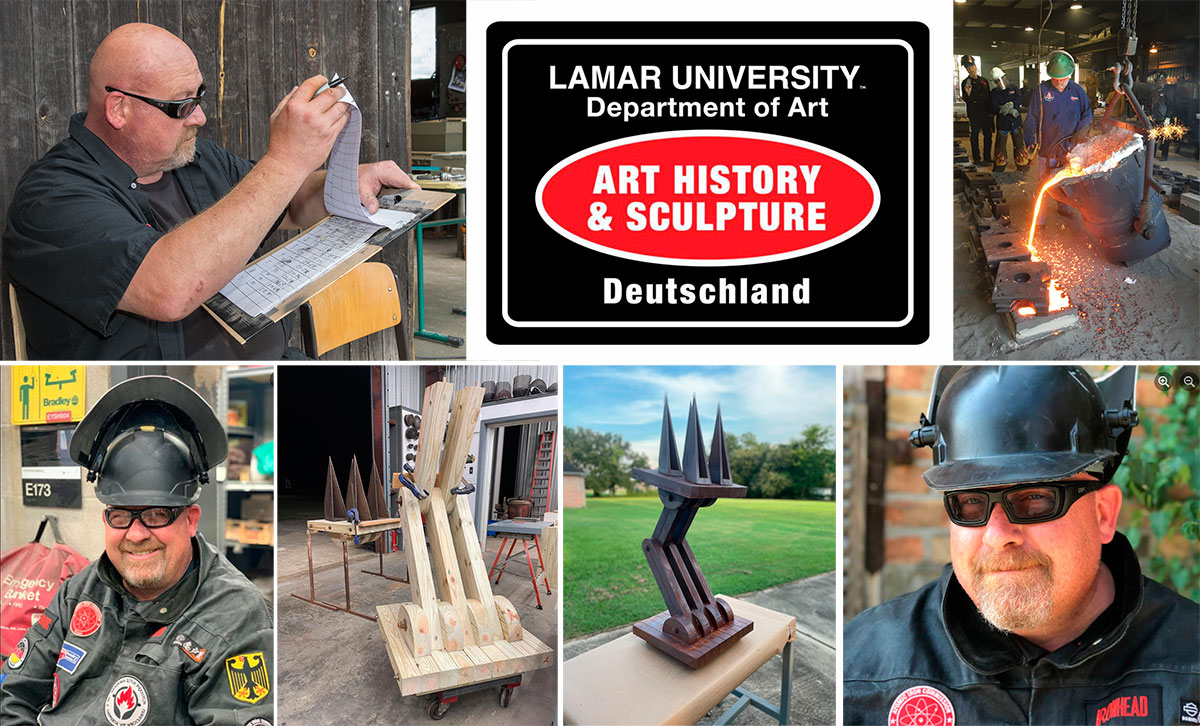
https://www.lamar.edu/fine-arts-communication/art-design/faculty-and-staff-directory/kurt-dyrhaug.html | http://samfa.org/kurt-dyrhaug-texas-sculpture-group![]() Public Art
Public Art![]() Susanne Kähler
Susanne Kähler
Who or what do we want to build monuments for nowadays? Is every monument a warning for tomorrow? Monuments are the result of artists' analysis of events, issues, and personalities. Monuments are interpretable and materialistic sources. They tell stories about the value systems, power relations, and communication strategies of the time of their making. Lastly, they are central to public spaces and set within the landscape of our cities. There has been a lot of discussion as to monuments should be handled and how the questioning of past structures can be shown. But what are adequate artistic forms and materials of our time? Is it participation and multifacetedness? What message sends the material iron today? And will our monuments be readable in the future?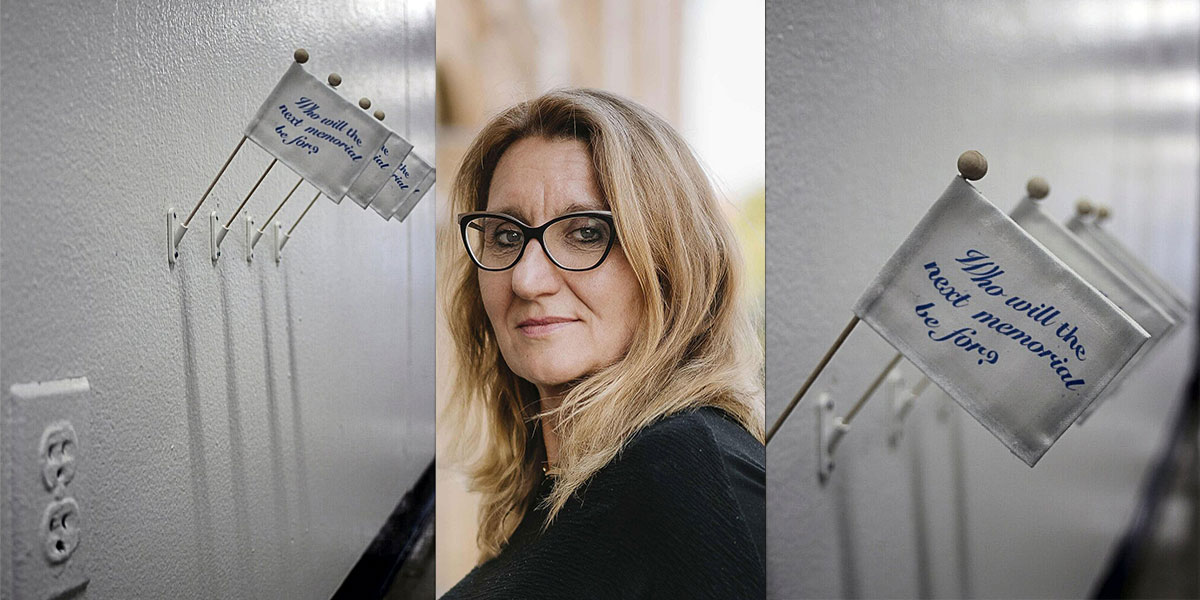
Gabrielle Egnater: Who Will The Next Memorial Be For? | Susanne Kähler | Pine Wood, PLA, White linen, Heat Transfer Ink ![]() Public Art
Public Art![]() Demian Dinéyathi, Miranda Kyle, Ali Shargo-Spechler, TK Smith
Demian Dinéyathi, Miranda Kyle, Ali Shargo-Spechler, TK Smith
Without Obstruction: Monuments and Memorials of, not on the Land
Monuments, as markers of history and works of art, cannot be divorced from the context of the spaces they reside. Art in the public realm is formed by/ through relationships: to history, to people, to material, and to space. The legacies of such works build a geological palimpsest from which layers of contested histories and fragmented memories are transcribed. This panel will explore the interrela tion of geography and power.
Western traditions of monument and memorial making do not account for divergent understandings of Land and the personal, communal, and spiritual rela tionships formed with land itself. Contemporary artists create within and against these sculptural traditions to challenge and expand how we see Land and our complex relations to it. How do we reconcile what we know with what we do? Are there ethical commissioning practices on stolen or contested lands? How do we speak to the memory of the Land that has seen geonicide, war etc? How do we honor those that understand the Land as, not only shelter, but as kin?

![]() Public Art
Public Art![]() Mary Nebauer, Cydnei Mallory, Hanna Makkonen. Michael Rees
Mary Nebauer, Cydnei Mallory, Hanna Makkonen. Michael Rees
The Speculative Object: Site in an Asynchronic Age
Presentation on the development of computer generated sculptural forms capable of traversing multiple plattforms and sites, from traditional to virutal. Based on a collaboartative eeffort originating between the Arizona School of Art, Herberger Institure for Design and Arts, and the Center of New Art at William Peterson University in New Jersey. The unifying thematic core of this endeavor, the speculative object, grew out of the planners’ discussion of spelculative fiction and imagined landsacpes. References include Graham Harmon and Ian Bogost. The organizers are intrigued with the idea of letting the objects have unknown qualities and allowing them to be widely defined outside of their usefulness to humans, an approach that is natural to sculptors. While the cast metal artworks exist as tangible objects in the gallery setting, each of the sculptors virtually sited their works in a chosen real-world location using Google Earth, redefining the scale and reference of the work. The scale of the objects are realized as monumental: from building to landscape-sized, opening the possibility of a way to contextualize the sculptures in selected geographic coordinates and to extend their speculative nature both in meaning and in form. Finally, the original stereolithography files exist in a virtual environment, where viewers are able to explore further the speculative properties of the objects, enhanced through surface mapping and interactive elements. The asynchronicity in the subtitle refers to the way this exhibition concurrently uses a range of processes and methodologies developed at very different times in history. By putting established sculptural techniques into play alongside new physical and virtual computing tools, aspects of the exhibition move away from established exhibition display frameworks in an exploration of how sculptural forms can be conceived, executed, and replicated across multiple platforms and simultaneously situated in both real and virtual world sites.
 Mary Nebauer | Makkonen | Google Earth sculpture
Mary Nebauer | Makkonen | Google Earth sculpture
![]() Public Art
Public Art![]() Albena Baeva & Robert Sakrowski
Albena Baeva & Robert Sakrowski
Now you see me, now you don’t
The new digital normal is pressuring the art world for transformation. The artists already use the available digital tools to reclaim public space. Are augmented and mixed realities the answer for contemporary digital sculpture? Artist Albena Baeva (Ploshtadka) and curator Robert Sakrowski (openAR) will discuss such questions in a conversation presenting different approaches on showcasing augmented reality sculptures.
Ploshtadka is situated at the centre of a children’s playground in a residential neighbourhood in Sofia, part of the digital gallery Gallery. This is a home for temporary public augmented reality (AR) sculptures created, supported and curated by artists Albena Baeva and Rene Beekman.
openAR is the world's first cooperative platform for digital artists explicitly designed to help all artists prosper. Everyone is welcomed to upload a piece there, mint it, and curate a show. Simultaneity is one of the first openAR exhibitions that connects the aesthetics of Socialist Realism to the last thirty years of computer game design in the centre of Berlin created with Blank & Jeron and curated by Sakrowski.
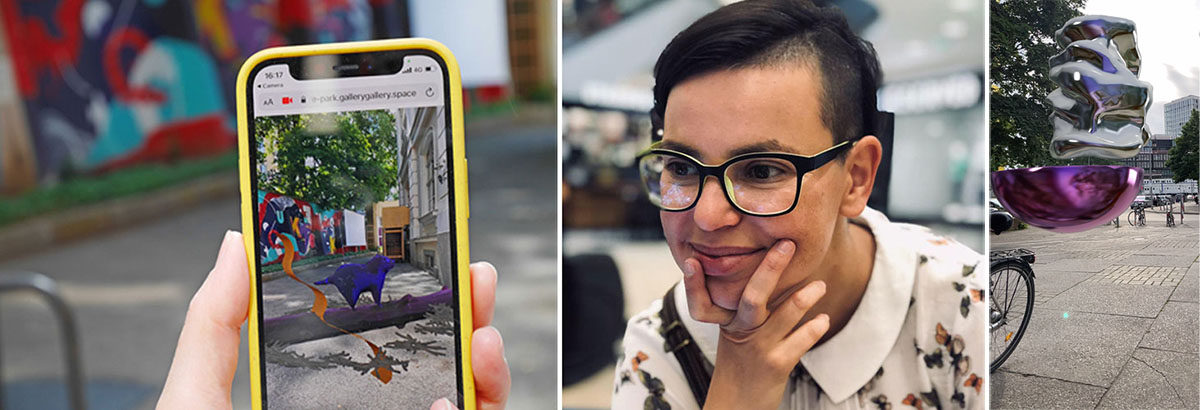
Albena Baeva works at the intersection of art, technology and social science. She uses ML and AI, physical computing, creative coding, mixed reality and DIY practices. Albena is a co-founder of the first gallery for digital art in Bulgaria, gallery Gallery, the AR sculpture park Ploshtadka, Symbiomatter: experimental arts lab, Runabout project and the studio for interactive design Reaktiv. Her work was shown in museums for contemporary art including Essl (Austria, 2011), EMMA (Finland, 2013), MCV Vojvodina (Serbia, 2015 and 2019), galleries and festivals for video and performance in Austria, Bulgaria, Czech Republic, Cyprus, Denmark, France, Finland, Germany, Hungary, Italy, Lithuania, Switzerland, Serbia, Turkey, Ukraine and the USA.
Sakrowski holds a master’s degree in art history and works as a freelance curator in Berlin. From 1999 to 2003 he curated and organised exhibitions and lectures on net art as part of the project netart-datenbank.org. From 2007 to 2009 he worked as a freelance researcher on the “Net Pioneers 1.0” research project at the Ludwig Boltzmann Institute Media.Art.Research in Linz. Since 2007 he has been working intensively on the web.video phenomena under the name CuratingYouTube.net and has presented his own video online tool gridr.org (2012). In 2014/15 he worked as curator for the transmediale festival “capture all”. Since October 2016 he has been managing and curating the panke.gallery in Berlin-Wedding. He is a founding member (2019) of the Zentrum für Netzkunst Berlin![]() Material
Material![]() Coral Penelope Lambert
Coral Penelope Lambert
The Object Magic: Performance and Artifact
Artists on this panel will discuss the magic imbued in an object as a result of performance iron pour. Whether cast during the full moon, at dawn or on midsummers does the iron take on that metaphysical presence. The artists represented take ordinary objects through the extraordinary transformative process of casting in metal. Investigating what it is that imbues an inanimate object with a hidden presence. The material of Iron has its own association to magic as, each cast object tells a story and holds a memory.
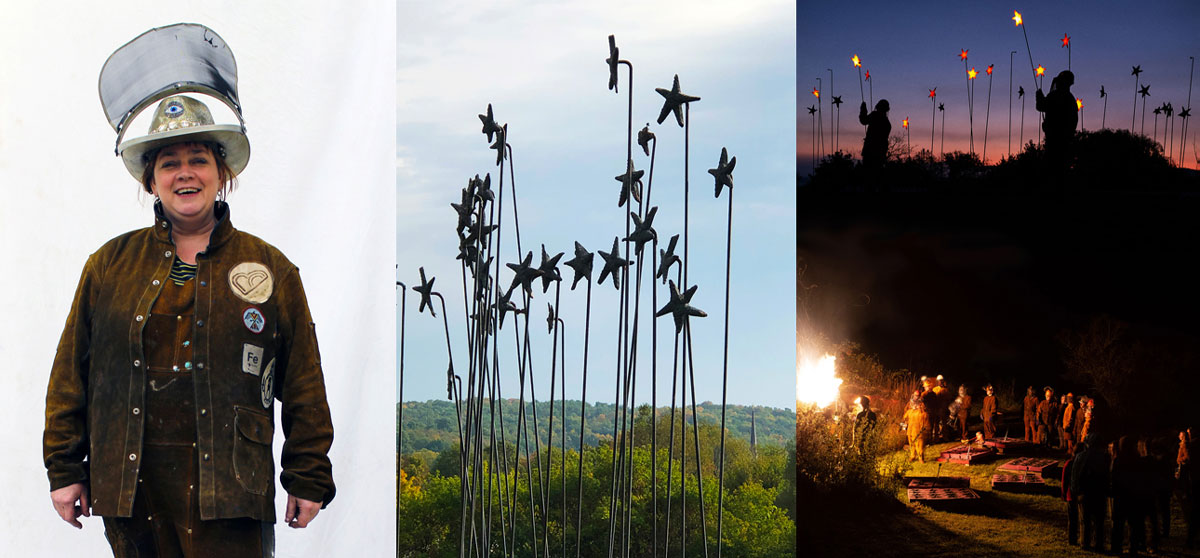
Coral Penelope Lambert | Sculpture Starry Starry Night | Peformance Starry Starry Nigh
![]() Material
Material![]() Scott Kamlah
Scott Kamlah
Furnace Fingerprints
I've been casting iron art and operating furnaces for several years, first as a student at the University of Minnesota and later as an independent artist. And I've always been curious about the composition of the iron they produce. Every coke-burning furnace is different and each furnace operator has their own way of doing things. My goal is to discover how these variations translate into metal. To that end, I’m requesting artists and institutions that cast iron to donate a sample and include specific information about its production. The data I am requesting will include but is not limited to: the furnace type and dimensions, the source of iron used in charges (radiators, engine parts etc.) as well as any alloying agents and inoculants. With the help of Phoenix area foundry experts and Arizona State University's Department of Material Sciences, I propose to analyze the iron samples to determine their composition in order to detect trends relating to furnace design and operation that can be seen on a chemical/metallurgical level. This endeavor will be supported in part by research funding from the Foundry Educational Foundation. The aim of the project is not simply to analyze furnace output. The database I'm creating was inspired in part by Gabriel Akagawa’s Foundry Tree. Instead of focusing on artists and pedagogical relationships, Furnace Fingerprints documents the furnaces used by iron-casting artists around the world. Participating artists/institutions are invited to include images of their furnaces in operation, as well as a synopsis of their known history. By gathering this information and making it accessible, Furnace Fingerprints strives to further preserve the legacy of cast iron art. I'm looking for the opportunity to present my research to the global casting community at the ICCCIA and expand the database by collecting iron samples and furnace information while there.![]() Material
Material![]() Joshua Reiman, Ed Parrish, Julie Ward, Addy Smith-Reiman, Jay Ellias, Jono Retallick and Aaron McCaffery
Joshua Reiman, Ed Parrish, Julie Ward, Addy Smith-Reiman, Jay Ellias, Jono Retallick and Aaron McCaffery
Hot, fast, and fluid – The life and work of Casey V Westbrook
This panel presentation will address the long-lasting impact that Casey V. Westbrook had on the practice of contemporary cast iron art, and will feature many of Casey’s technical ambitions and breakthrough techniques at epic proportions. Casey's legacy is carried on through the mentorship and friendships made along the way. Casey’s ability to understand liquid metal and its complex characteristics and large number of variables was unparalleled within the field of casting iron for art.
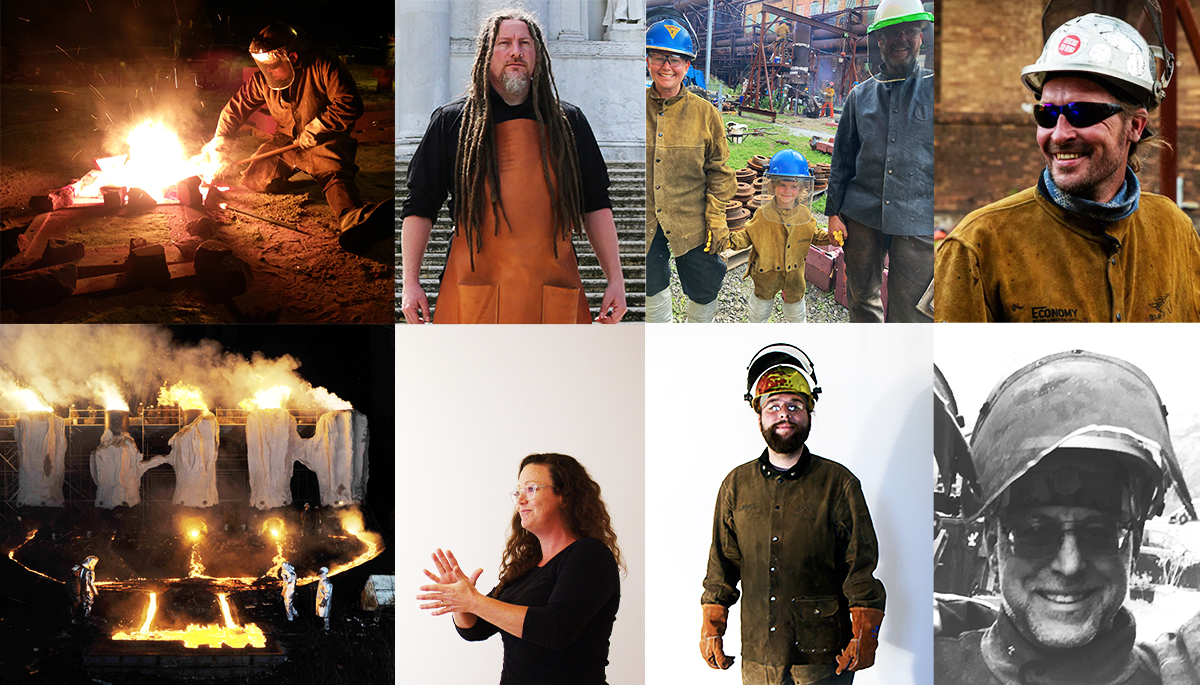
Joshua Reiman https://www.joshuareiman.com
At Work | Jono Retallick | Addy Smith-Reiman, Joshua Reiman | Ed Parrish
Cast Iron | Julie Ward | Aaron McCaffery | Jay Ellias ![]() Material
Material![]() Savannah Smith
Savannah Smith
The National Ornamental Metal Museum
The mission of the Metal Museum is to preserve, promote, and advance the art and craft of fine metalwork within the United States as well as abroad. This presentation will talk more about this mission, our programing, and the opportunities for emerging and professional artists offered at the museum.
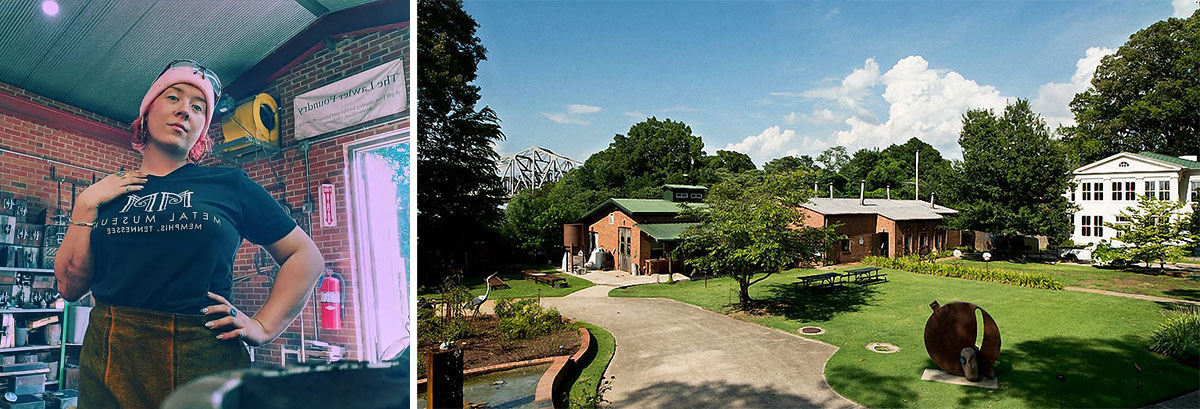
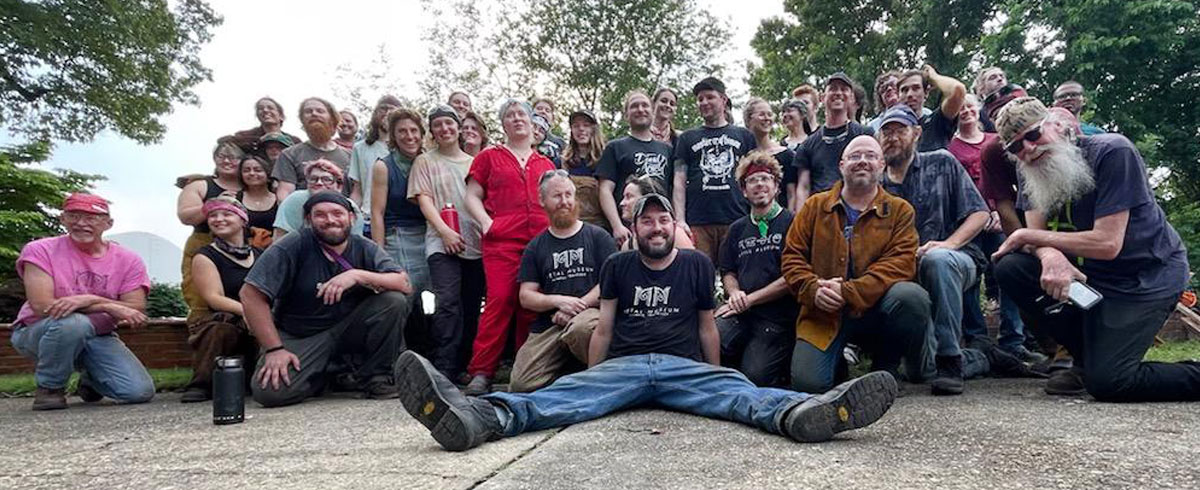
https://www.metalmuseum.org
Tuesday, September the 20th
![]() Sustainability
Sustainability![]() Jeremy Entwistle, John Galt and William Wolff
Jeremy Entwistle, John Galt and William Wolff
DECOUPLING: Shedding carbon-intensive processes for a sustainable foundry future.
John Galt, Jeremy Entwistle and William Wolff continue the research and discussion of transitioning the performative and practical iron cupola into a more sustainable and environmentally-friendly tool. Artists, experts, and ideas from across the spectrum of contemporary cast iron art-making converge in Berlin to tackle one of the most globally pressing issues that confronts artists and their processes within the ICCCIA and around the globe.
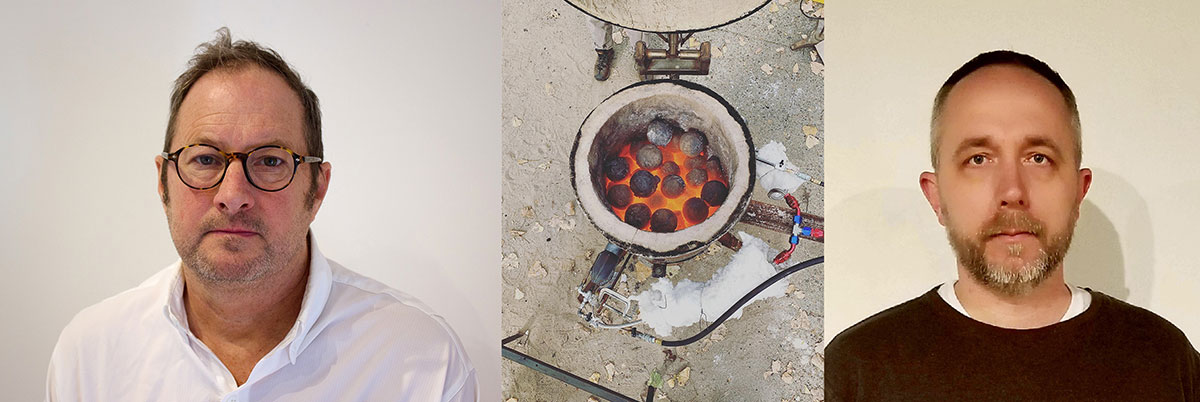
John Galt, Jeremy Entwistle and William Wolff
![]() Sustainability
Sustainability ![]() Quick and dirtySustainability
Quick and dirtySustainability
Nils Hint Jewellery and blacksmithing department, Estonian Academy of Arts
Quick and dirty is a experimental iron casting workshop run by jewellery and blacksmithing department in Estonian Academy of Arts. The annual workshop has took place six times and it started after the ICCCIA conference in Latvia. During the years it has grown bigger and become a melting pot for hundreds of local and international students and teachers. Last two years I have organized the workshop together with David Snoo Wilson, foundry master and artist from UK.
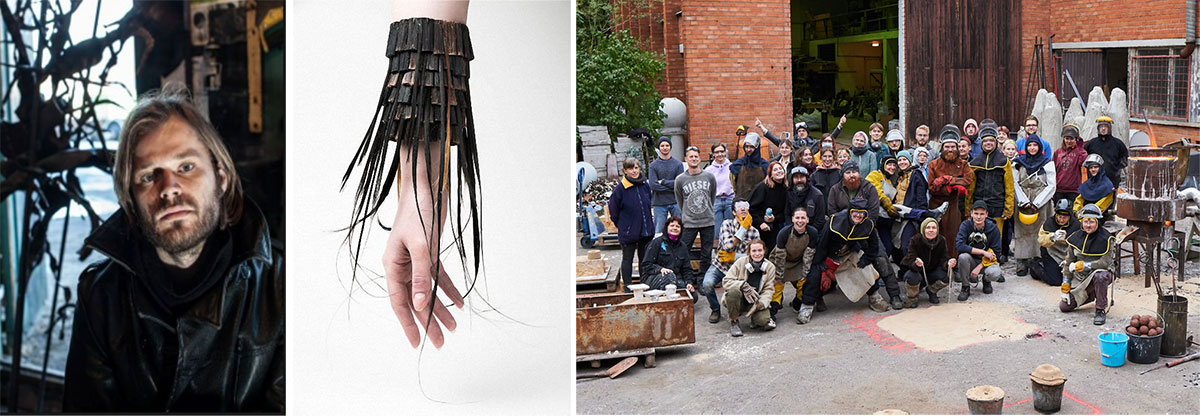
Nils Hint | http://www.nilshint.com | In the middle: Liisbeth-Kirss, Photo: Sigrid Kuusk | https://www.instagram.com/artofthevirgin/?hl=de | EKA, Jewellery and blacksmithing | https://www.artun.ee/en/curricula/jewellery-and-blacksmithing/overview/ |
![]() Sustainability
Sustainability ![]() Dylan Collins
Dylan Collins
Fire Arts + Creative Placemaking
This panel will engage artists working with “fire arts" processes to share their experiences with community-based art initiatives, including public art, socially engaged art, and social practice art. Participants will share information about the successes and challenges of making art in public spaces, how they've found funding for these endeavors, and what they've learned while collaborating from the ground up with stakeholders to generate positive and impactful outcomes.
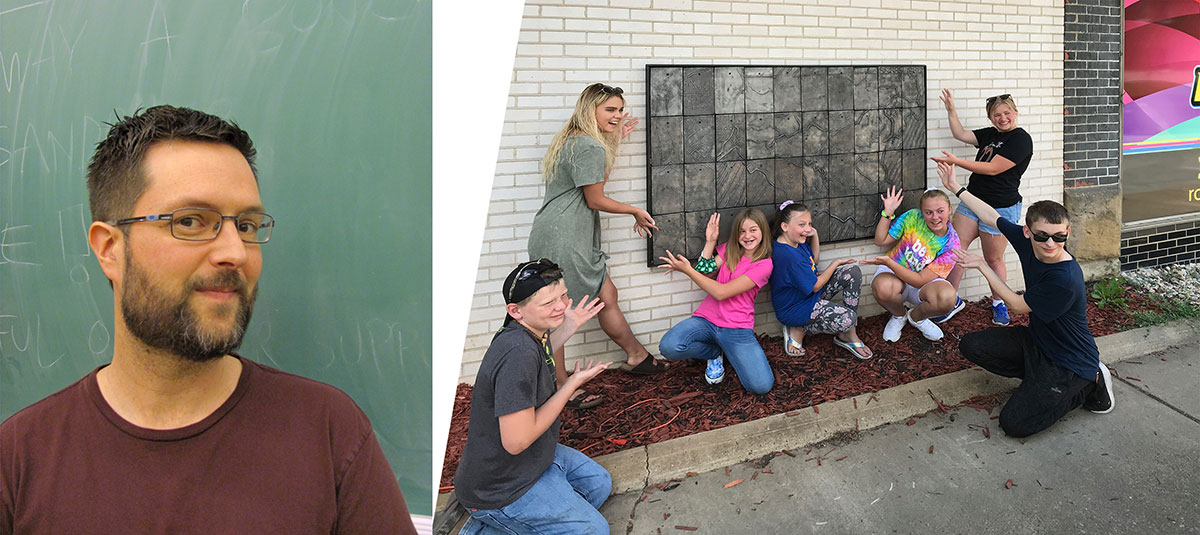
![]() Sustainability
Sustainability ![]() Gabrielle Egnater
Gabrielle Egnater
Material Pairings: Looking Beyond Dichotomy
The panel "Material Pairings: Looking Beyond Dichotomy", will be focused on artists who pair or inform cast iron with "other materials." Common material pairings include fibers, glass, and drawing. The conversation that usually surrounds these pairings focuses on the relationship between hard and soft or feminine and masculine. However, I am interested in how the panelists dig beyond these dichotomies and what draws cast iron to other materials.
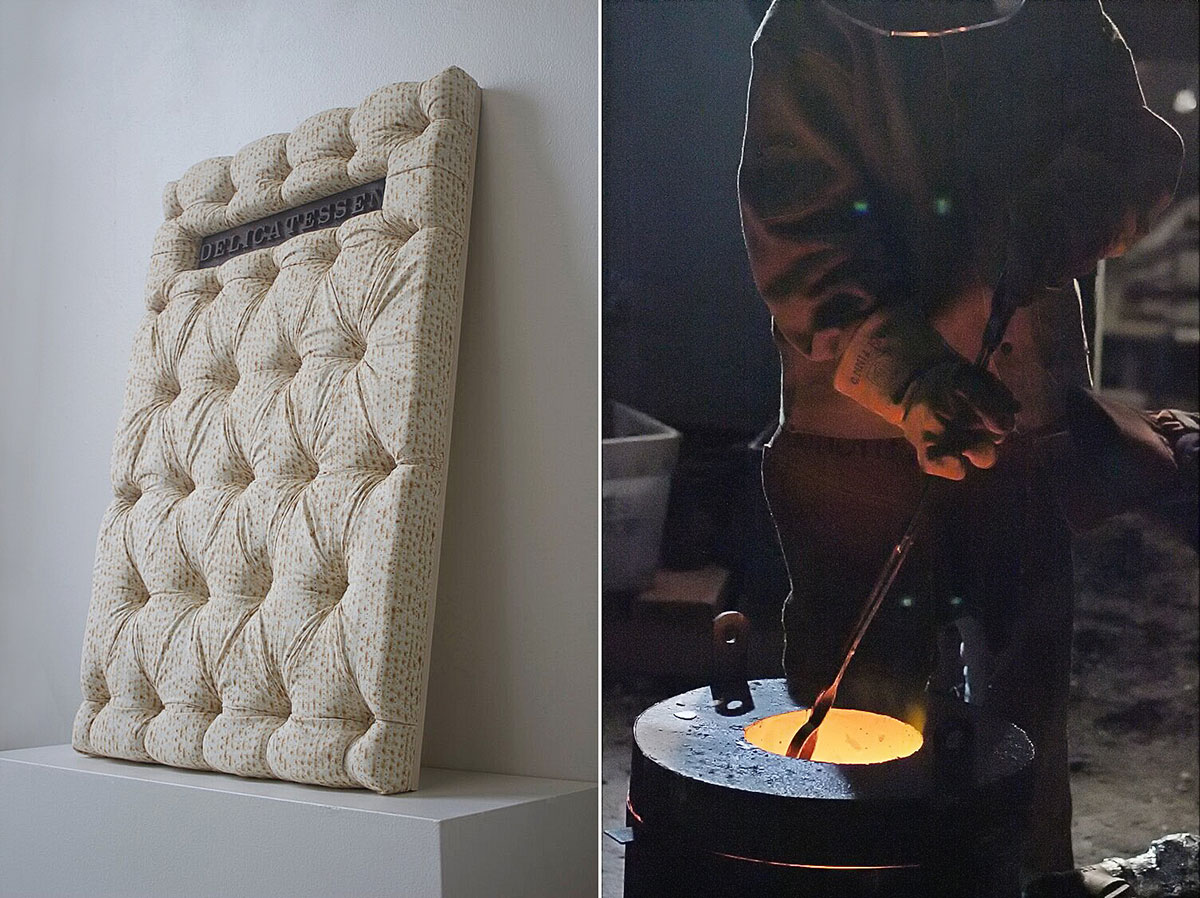 Gabrille Egnater: Delicatessen Signage | Cast Iron, Matzo Fabric, Ply Backin | http://www.gabrielleegnater.com
Gabrille Egnater: Delicatessen Signage | Cast Iron, Matzo Fabric, Ply Backin | http://www.gabrielleegnater.com
![]() Sustainability
Sustainability ![]() Oliver Charles, Brittany Weekly, Marc La Pointe, Liz Ensz, Rhonda Wright, Nikki Moser
Oliver Charles, Brittany Weekly, Marc La Pointe, Liz Ensz, Rhonda Wright, Nikki Moser
"Iron Art: Protest, Identity, and Liberation" Panel
This panel will explore iron as a revolutionary medium and an important element of protest art, particularly in relation to self-definition, breaking convention, and symbolic representations. The scope ranges from the material and linguistic history of iron, to the artists who work in the medium and what they have to say. “Iron Art: Protest, Identity, and Liberation” highlights iron art from the 1900s through the present by examining work from several artists and synthesizing multiple texts that mention iron and protest as interrelated in some capacity– the goal being to produce a broader base-understanding of the protest-power of iron art where such documentation is often lacking.
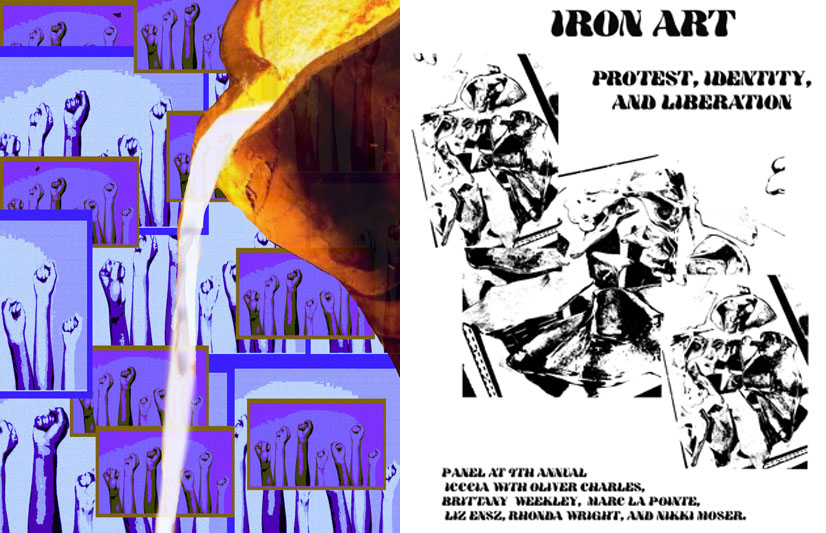
![]() Sustainability Part 1, Part 2 will be held at the workshops
Sustainability Part 1, Part 2 will be held at the workshops ![]() Allison Baker & Emily Baker, Jessica Bergman-Tank, Christ Sancome, Rebecca Fils
Allison Baker & Emily Baker, Jessica Bergman-Tank, Christ Sancome, Rebecca Fils
Feedback & Dis/Ability
![]()
![]() Stacker Molds WorkshopKay Dartt, Becca Flis
Stacker Molds WorkshopKay Dartt, Becca Flis
In an industry where sweat equity is currency, it is necessary for leaders to question social and societal norms and take an active role in carving out a place for everyone. This panel of long-time educators, practioniers, and artists will therefore discuss a solutions oriented approach to fostering diversity, equity, and inclusion in contemporary cast iron production and art making.
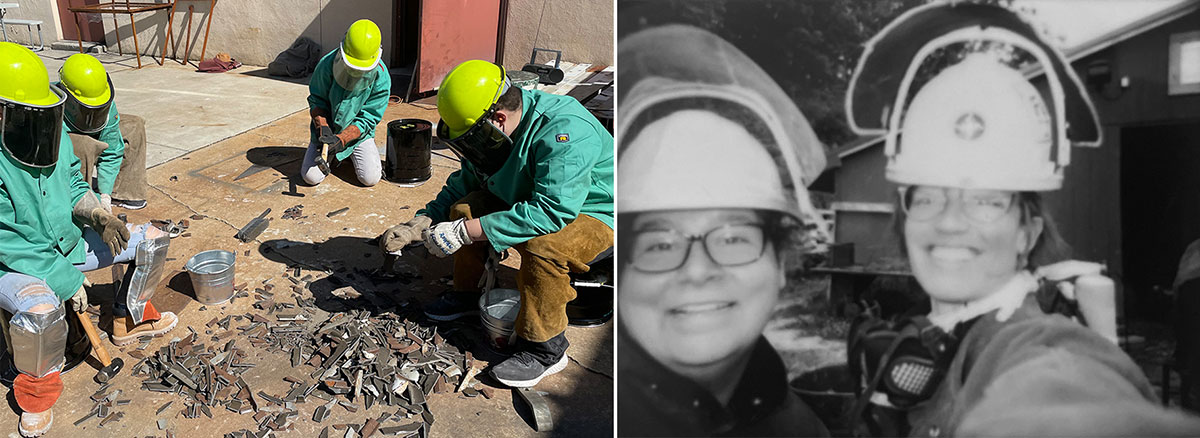
![]() Presentation
Presentation![]() Wayne Potratz
Wayne Potratz
Memorial Presentation (by Wayne Potratz) and Raise your Glass for Thomas D. Gipe
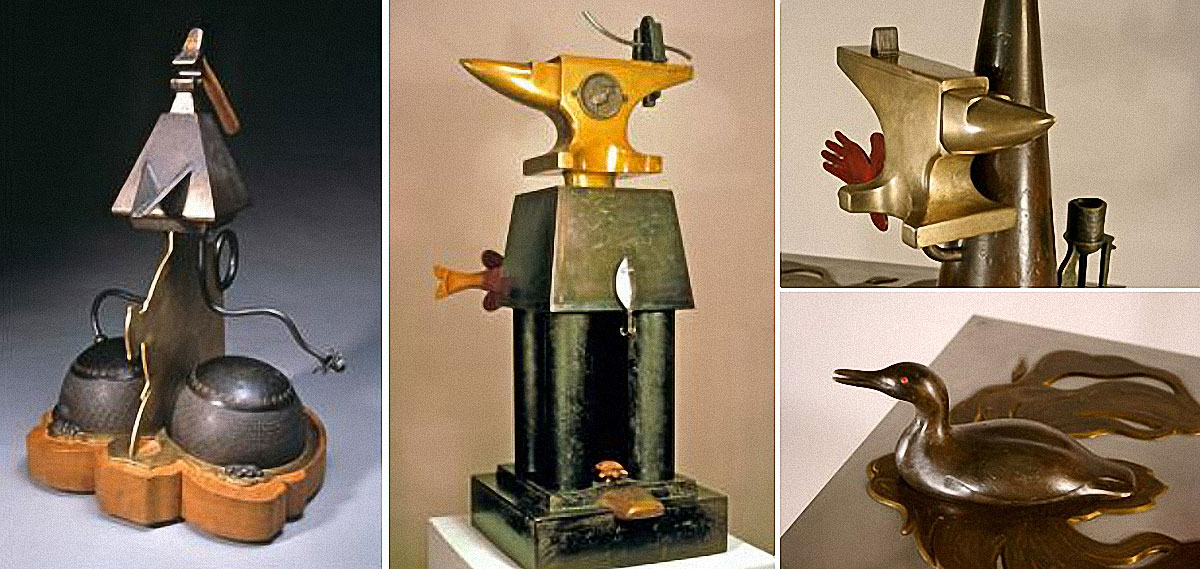
Thank you for submissions!
The organizers of the conference informed the successful scientists and artists.
In the moment the conference is getting in touch with those who will moderate the panels to discuss technical requests.
Stay curious! The thrilling program will be published on this website very soon.
